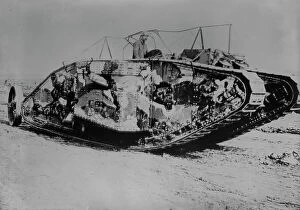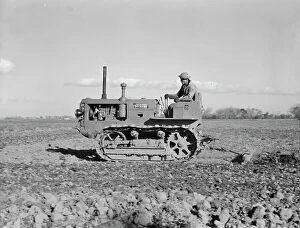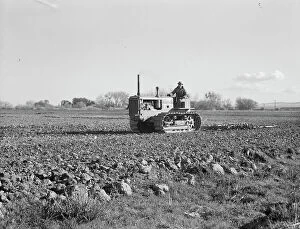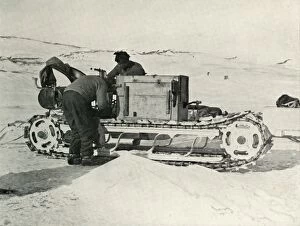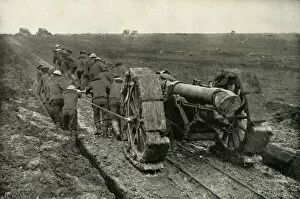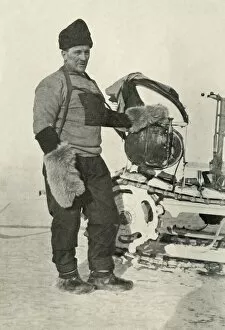Caterpillar Track Collection
"Caterpillar Tracks: Revolutionizing Mobility and Power in the 20th Century" From the Motor Sledges of 1911 to large-scale mechanized farming in Kern County, California
For sale as Licensed Images
Choose your image, Select your licence and Download the media
"Caterpillar Tracks: Revolutionizing Mobility and Power in the 20th Century" From the Motor Sledges of 1911 to large-scale mechanized farming in Kern County, California, caterpillar tracks have played a pivotal role in transforming various industries. These ingenious inventions have enabled humans to conquer challenging terrains and accomplish tasks that were once deemed impossible. In 1913, artist Herbert Ponting captured the awe-inspiring sight of Chief Stoker Lashly maneuvering through treacherous Antarctic landscapes with his motor sledge equipped with caterpillar tracks. This breakthrough technology allowed explorers to navigate icy terrain effortlessly, opening up new frontiers for scientific research. The versatility of caterpillar tracks became evident during World War I when tanks emerged as formidable weapons on the battlefield. From small Renault tanks to massive armored vehicles dragging guns into new positions, these machines revolutionized warfare tactics forever. The haunting image of a tank in action on the Western Front speaks volumes about their impact during this devastating conflict. Beyond military applications, caterpillar tracks also transformed agriculture. Dorothea Lange's photograph from 1939 showcases migratory field workers pulling carrots using mechanized equipment fitted with these innovative tracks. This advancement not only increased efficiency but also reduced labor-intensive processes, marking a turning point in large-scale farming practices. Caterpillar tracks even found their way into everyday life as seen in Edgeworth's depiction from 1830 where they were used for transportation purposes. Whether it was hauling heavy loads or traversing difficult terrains, these remarkable inventions provided unparalleled mobility and power across different sectors. As time progressed, mobile artillery pieces integrated caterpillar track technology during World War I battles like Moronvilliers in France. These agile machines could swiftly move across rugged landscapes while providing crucial firepower support to troops fighting on the front lines. The legacy of caterpillar tracks continues today as we witness their influence on modern machinery and transportation systems.

